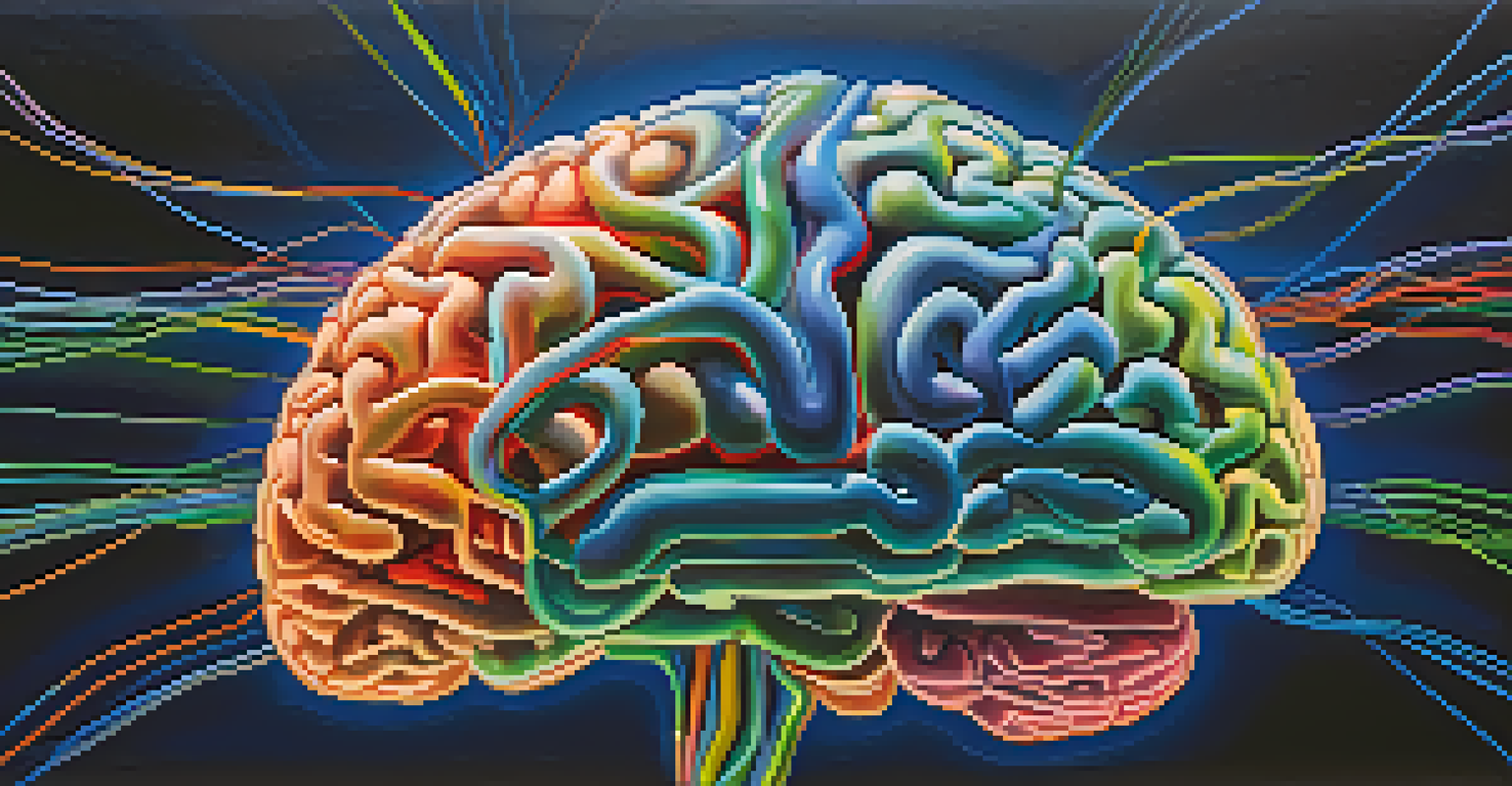Entheogens in Counseling: Bridging Science and Spirituality

Understanding Entheogens: More Than Just Psychedelics
Entheogens are substances that have been historically used to induce spiritual experiences. They often come from plants or fungi and can alter perception, mood, and consciousness. While they are commonly associated with psychedelics, entheogens are specifically linked to spiritual practices, making them unique tools in counseling.
Psychedelics can help us uncover the deep layers of our psyche, allowing for profound personal insights and healing.
These substances can help individuals explore their inner selves, confront unresolved emotional issues, and foster a deeper connection with the world around them. This transformative potential is what makes entheogens a topic of interest in the therapeutic community. By facilitating profound experiences, they can lead to insights that traditional therapies may not reach.
In recent years, interest in entheogens has surged, with studies highlighting their effectiveness in treating conditions like PTSD, anxiety, and depression. As science delves deeper into their mechanisms, the line between therapy and spirituality begins to blur, creating exciting new possibilities for healing.
The Historical Context of Entheogens in Healing Practices
For centuries, various cultures have utilized entheogens in their rituals and healing practices. Indigenous people, for instance, have long incorporated these substances into spiritual ceremonies, seeing them as gateways to deeper understanding and connection with the divine. This rich historical context provides a foundation for their modern therapeutic use.

In contrast to Western medicine, which often emphasizes a purely biochemical approach, traditional practices view healing as a holistic process. The use of entheogens in these cultures reflects a belief that mental, emotional, and spiritual health are interconnected. This perspective is beginning to gain traction in contemporary counseling, highlighting the need for a more integrated approach.
Entheogens Aid Spiritual Healing
Entheogens are unique tools that facilitate deep emotional exploration and spiritual experiences, making them valuable in therapeutic contexts.
As therapists and researchers revisit these ancient practices, they are discovering the potential benefits of combining traditional wisdom with modern techniques. This blend can create a more comprehensive understanding of mental health, allowing individuals to heal on multiple levels.
The Science Behind Entheogens: How They Work
Entheogens work primarily by interacting with the brain's serotonin receptors, particularly the 5-HT2A receptor. This interaction can lead to altered states of consciousness, which may enable users to process emotions and memories differently. Understanding this scientific basis is crucial for therapists considering their use in treatment.
The use of entheogens can provide a powerful catalyst for personal transformation and emotional healing.
Research has shown that these substances can promote neuroplasticity, the brain's ability to reorganize itself by forming new neural connections. This is particularly significant for individuals dealing with trauma or mental health issues, as it opens the door for new ways of thinking and behaving. The science behind entheogens reveals their potential to facilitate profound psychological shifts.
Moreover, studies indicate that the experiences induced by entheogens can lead to lasting changes in perspective and behavior. For example, patients often report increased feelings of connectedness and openness, which can enhance their overall well-being. By bridging the gap between science and spirituality, entheogens offer a unique avenue for therapeutic exploration.
Entheogens and Their Role in Modern Counseling
The resurgence of interest in entheogens has prompted many therapists to explore their potential in modern counseling. Some practitioners are now incorporating these substances into their therapeutic practices, often in controlled settings to ensure safety and efficacy. This innovative approach aims to create a more profound therapeutic experience for clients.
Therapists who embrace entheogens often emphasize the importance of set and setting, which refers to the mindset of the individual and the environment in which the experience occurs. This focus is crucial for ensuring that the experience is positive and beneficial. By creating a supportive environment, therapists can help clients navigate their experiences safely.
Historical Roots of Healing
Many cultures have historically used entheogens in rituals, emphasizing a holistic view of mental, emotional, and spiritual health.
As more evidence accumulates regarding the therapeutic benefits of entheogens, the field of counseling may undergo a significant transformation. This evolution could lead to a new understanding of mental health that integrates both scientific rigor and spiritual wisdom, ultimately benefiting clients on their healing journeys.
Ethical Considerations in the Use of Entheogens
As with any therapeutic approach, the use of entheogens raises important ethical questions. Practitioners must navigate issues of consent, safety, and the potential for misuse. Establishing clear guidelines and ethical standards is essential to protect both clients and therapists in this evolving field.
Additionally, the legal status of many entheogens can complicate their use in therapy. While some substances are gaining acceptance in clinical settings, others remain illegal or heavily regulated. Therapists must stay informed about local laws and ethical guidelines to ensure they operate within legal and moral boundaries.
Furthermore, it's vital for therapists to approach the use of entheogens with cultural sensitivity and respect for their historical significance. Engaging with these substances requires a deep understanding of their roots and implications, ensuring that their use honors the traditions from which they originate while benefiting modern clients.
Personal Experiences: Stories of Transformation
Many individuals have shared powerful stories about their experiences with entheogens in therapeutic settings. These narratives often highlight profound insights, emotional breakthroughs, and a renewed sense of purpose. By sharing such experiences, clients can inspire others to consider alternative paths to healing.
For instance, some people report that a single session with an entheogen led to a significant reduction in anxiety or depression, allowing them to reconnect with their authentic selves. These transformations can serve as powerful testimonials to the potential benefits of integrating entheogens into counseling practices. Personal stories not only humanize the process but also provide hope for those struggling with mental health issues.
Future of Entheogens in Therapy
As research progresses, entheogens may revolutionize mental health care by integrating traditional wisdom with modern therapeutic practices.
These experiences remind us that healing is not a one-size-fits-all journey. Each person's path is unique, and entheogens can offer a distinctive opportunity for exploration and growth. As more individuals share their stories, the conversation around entheogens in counseling expands, paving the way for greater acceptance and understanding.
The Future of Entheogens in Therapeutic Practices
Looking ahead, the future of entheogens in counseling appears promising, with ongoing research and increasing public interest. As more studies are conducted, we can expect to see a deeper understanding of how these substances can aid in mental health treatment. This could lead to more integrated approaches that combine traditional and contemporary healing methods.
The potential for entheogens to revolutionize mental health care is immense. By offering alternatives to conventional therapies, they can provide individuals with new tools for self-discovery and healing. This shift may also encourage a broader acceptance of various therapeutic modalities, fostering a more inclusive understanding of mental health.

Ultimately, the future of entheogens in counseling will depend on continued dialogue between scientists, therapists, and clients. By collaborating and sharing insights, we can create a more holistic approach to mental health that honors both the scientific and spiritual dimensions of healing.